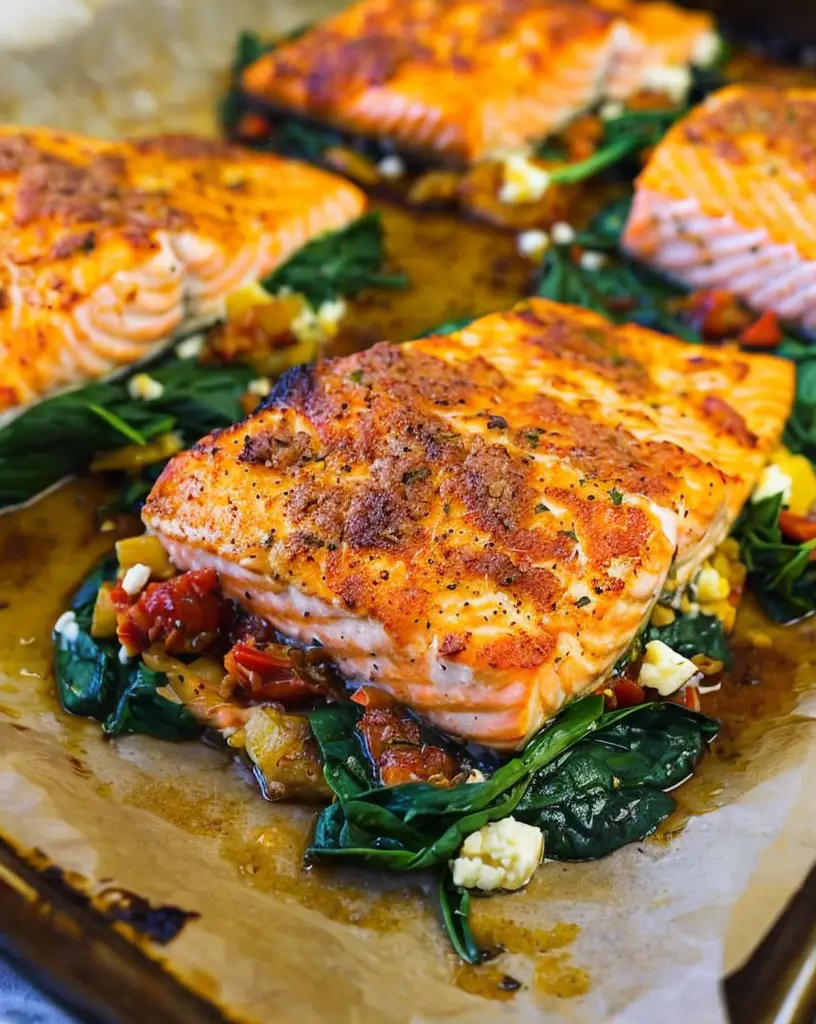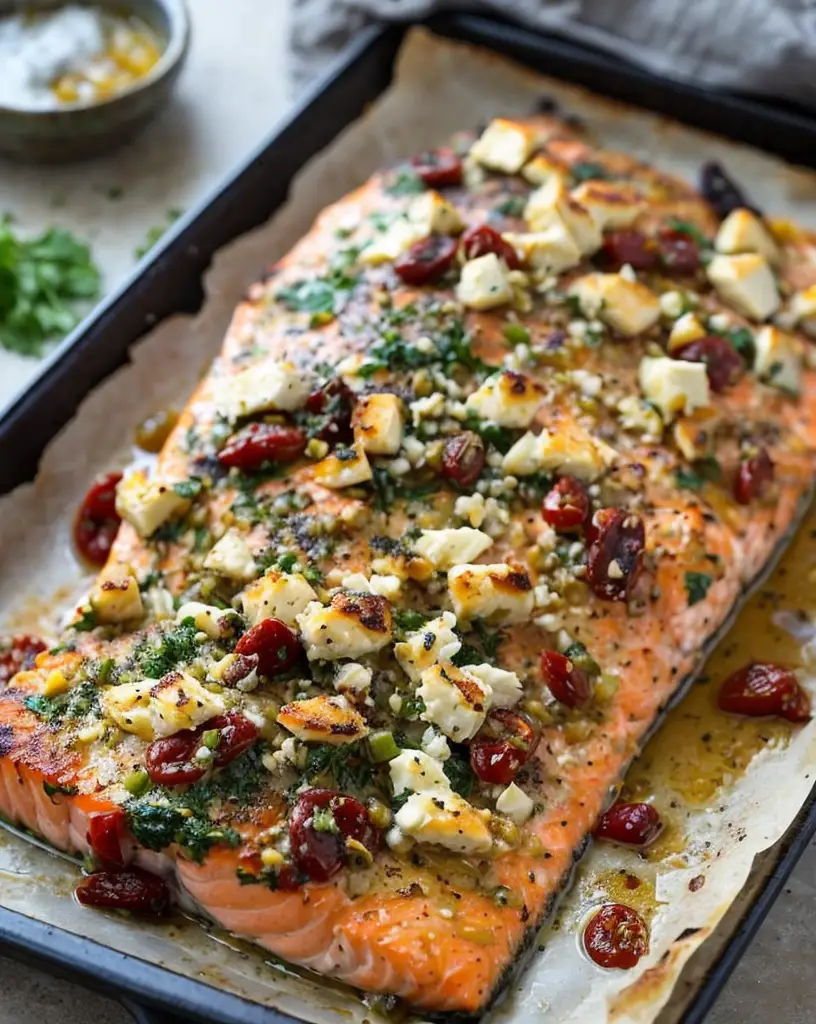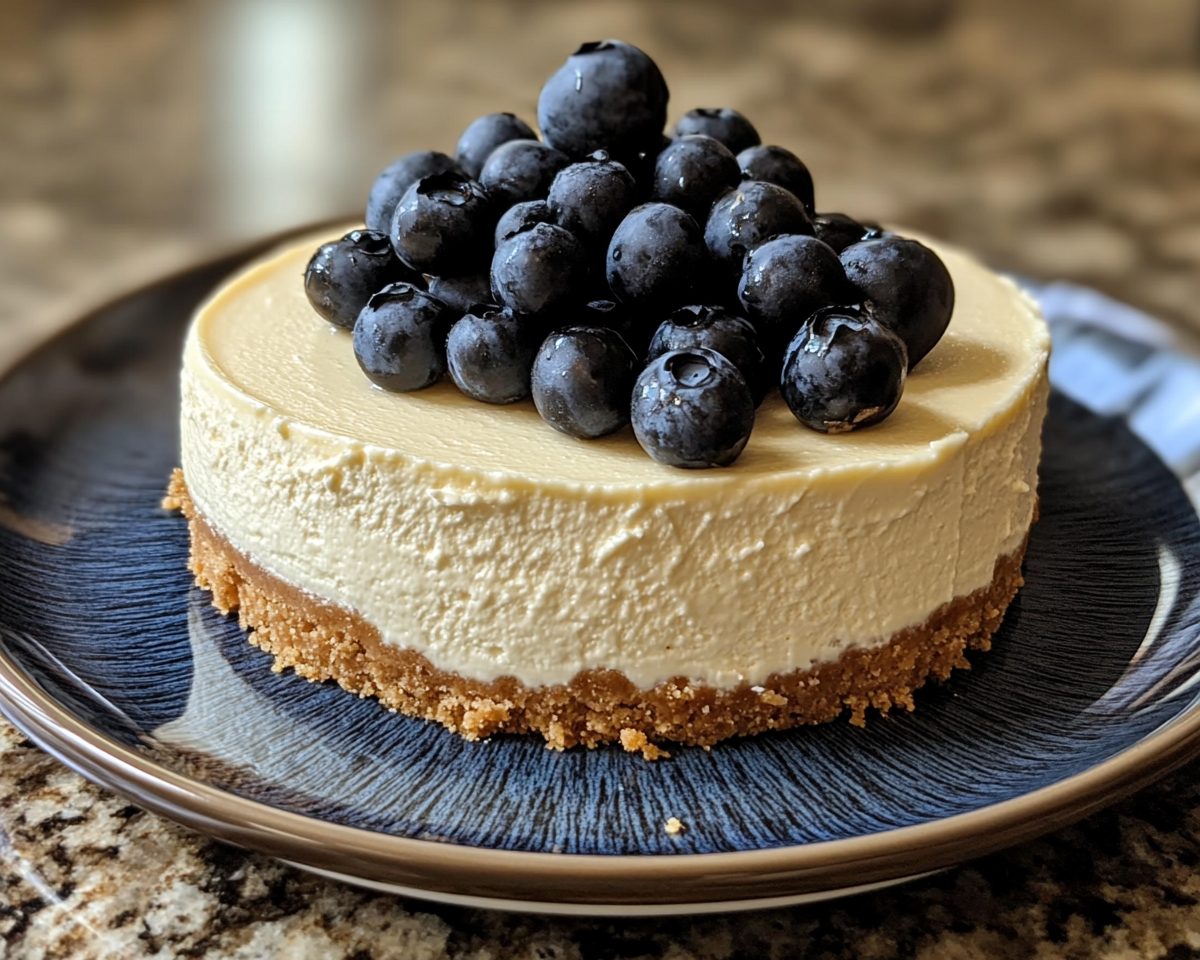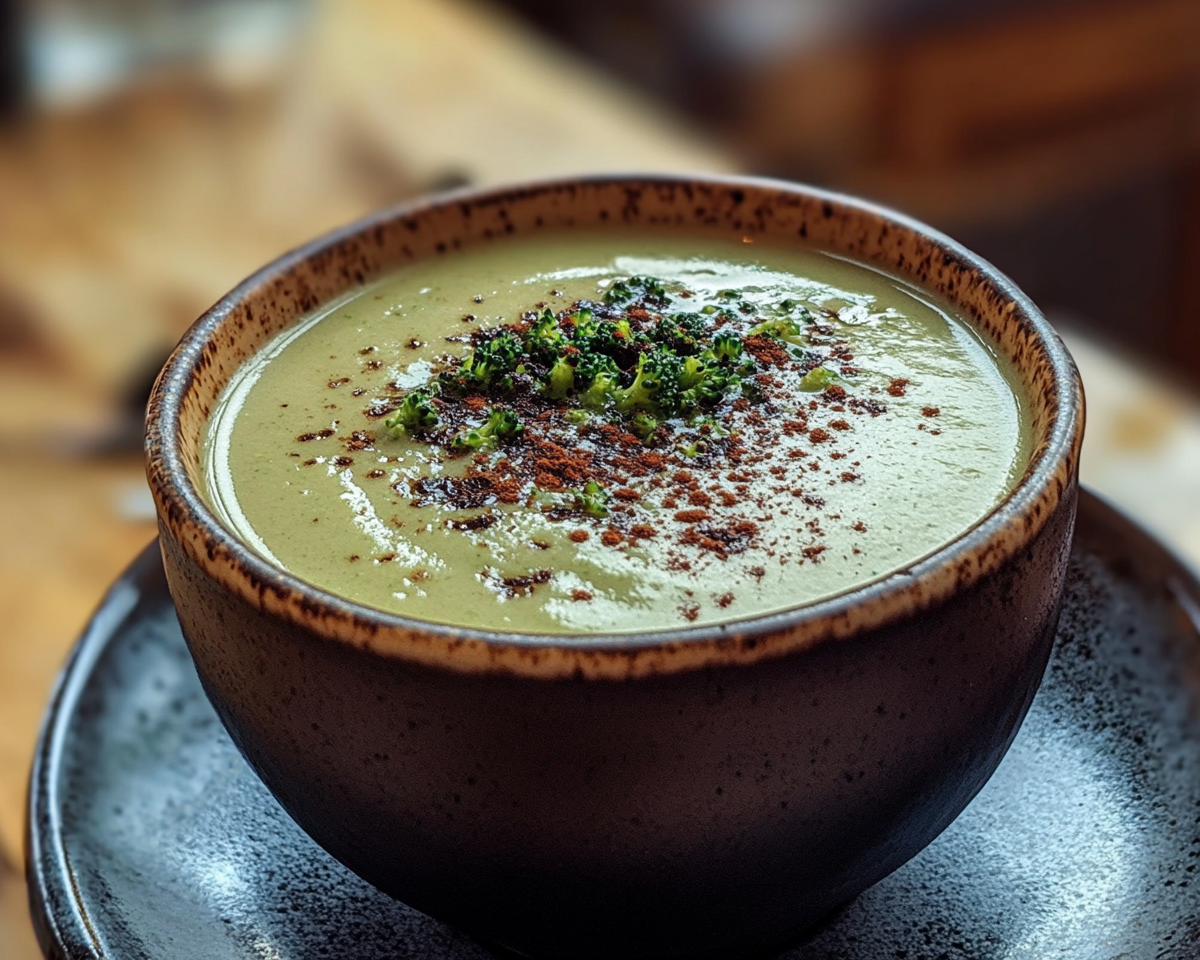Delicious Mediterranean Stuffed Salmon: A Flavorful Feast
Savor the essence of the Mediterranean with our exquisite Mediterranean Stuffed Salmon recipe. This dish bursts with rich, vibrant flavors from sun-ripened tomatoes, salty feta cheese, and fresh herbs woven into tender salmon fillets. Perfectly balanced, each bite takes your palate on a journey to the sun-drenched coasts of Greece, enveloping you in a symphony of tastes and textures.
The Mediterranean Stuffed Salmon not only delights the senses but also nourishes the body. The succulent salmon, rich in esteemed omega-3 fatty acids, when combined with a medley of vegetables, creates a wholesome meal. Ideal for gatherings and special dinners, it’s both impressive and approachable—allowing you to bring a touch of Mediterranean elegance to your table.
Quick Recipe Highlights
- Flavor Profile: The exquisite blend of Mediterranean ingredients provides a burst of sunshine on your plate. With an infusion of tangy feta, earthy spinach, and hints of lemon, the salmon becomes a delightful canvas for these vibrant flavors.
- Texture: The contrast between the tender flakiness of the salmon and the creamy, rich filling offers an indulgent mouthfeel reminiscent of dining in a coastal Greek taverna.
- Aroma: This dish emits an enticing aroma blending the freshness of herbs with the savory depth of baked salmon, inviting you into the kitchen before it’s even ready.
- Visual Appeal: The vivid colors of the stuffing against the soft, pink salmon make for an inviting dish that promises as much aesthetic delight as gastronomic pleasure.
- Skill Level Needed: This recipe requires intermediate culinary skills. The ability to butterfly a salmon fillet and prepare a cohesive stuffing are helpful as you craft this masterpiece.
- Special Equipment: A sharp fillet knife for precision cuts and a baking dish that ensures even cooking are essential for achieving the best results.
Recipe Overview
- Difficulty Level: Considered medium in complexity, this recipe includes fileting and stuffing, which may pose a challenge for novices but is certainly manageable with a little preparation.
- Category: This dish serves as a main course, ideal for family dinners or a striking centerpiece at your next dinner party.
- Cuisine: Rooted in Mediterranean culinary traditions, this recipe draws from Greek influences, elevating simple ingredients to gourmet status.
- Cost: Salmon and quality Mediterranean ingredients can be on the pricier side, though their nutritional benefits and flavors justify the investment.
- Season: Best enjoyed year-round, this dish shines particularly in the summer and fall when fresh herbs and vegetables are in abundance.
- Occasion: Its elegance makes it perfect for festive occasions, yet it remains simple enough for a weeknight indulgence.
Why You’ll Love This Recipe
The Mediterranean Stuffed Salmon is a testament to vibrant, wholesome cooking. It’s the culmination of fresh ingredients and time-honored techniques that come together to create something truly special. The taste marries the succulent flavors of ocean-fresh salmon with the rich Greek stuffing, creating a harmonious balance of earthy and fresh notes. The convenience is in its preparation; with components that can readily be assembled in advance, enabling you to focus on enjoying the meal rather than laboring over it.
Nutritional benefits abound as well, given the omega-3 rich salmon, antioxidants from the spinach, and the balanced fat profile from olive oil as the prime cooking medium. This dish serves as a perfect addition to any celebration or gathering, with its striking visual presentation and unbeatable taste earning unanimous accolades. Furthermore, the often-costly perception of Mediterranean cuisine is dispelled as the ingredients here can be sourced affordably, making this meal an accessible delight for everyone, from novices to seasoned chefs alike.
Historical Background and Cultural Significance
The Mediterranean Stuffed Salmon takes inspiration from an ancient culinary practice of combining locally sourced fish with abundant garden herbs. This approach has its roots in early Greek and Roman cuisine, where fish was often paired with readily available vegetables and legumes, reflecting a farm-to-table ethos centuries before it became a trend.
Originally, stuffing seafood was a method to preserve the moisture in the fish while imbuing it with rich flavors. This simple yet effective technique was passed down through generations, transforming under the influence of region-specific herbs and spices. As a result, the stuffed salmon became a celebrated dish throughout Mediterranean regions, served at festivals and gatherings as a representation of prosperity and abundance.
Ingredient Deep Dive
Salmon, often hailed as the king of fish, is at the core of this recipe due to its rich history and cultural significance in Mediterranean diets. Known for its distinctive flavor, it has served as a crucial source of protein and healthy fats, making it a cherished staple in many diets. When selecting, look for wild-caught varieties which offer superior flavor, while storing salmon in cold, airtight containers is essential to maintain freshness.
Feta cheese, a crown jewel of Greek cuisine, adds a creamy, tangy element to the dish. Its production is rooted in ancient Greece, considered a cultural symbol of hospitality and community. Notably rich in calcium and protein, feta complements the salmon with its savory, salty profile. Always seek authentic Greek feta, stored in brine to prolong its shelf life and preserve its bold flavor.
Common Mistakes to Avoid
- Using frozen salmon can greatly diminish the dish’s flavor and texture, which are best highlighted with fresh, high-quality fillets.
- Overcooking the salmon is a common pitfall leading to dryness; careful monitoring while baking ensures tender, moist results.
- Neglecting to season the dish adequately can lead to a lackluster taste; be liberal with herbs and spices for maximum impact.
- Not allowing the salmon to rest post-cooking can cause juices to escape, resulting in a less flavorful filling.
- Skipping the step of blotting the salmon dry before stuffing can cause excess moisture, affecting the texture of the stuffing.
- Overstuffing can lead to leakage while cooking, so careful filling placement is key.
- Failing to preheat the oven can result in uneven cooking, so ensure it is fully heated before baking the fish.
- Using the wrong baking vessel, such as one that’s too small, can hinder even heat distribution, leading to inconsistent results.
Essential Techniques
Butterflying salmon is a key skill here, ensuring the fillet can be adequately stuffed. Precision is vital—cutting the fish without severing through creates a perfect pocket for the filling, resulting in a uniform and aesthetically pleasing dish. Practicing patience is crucial, as is using a sharp knife to avoid jagged cuts.
The proper filling technique involves evenly spreading the stuffing to prevent overloading and ensures balanced flavors throughout. Visual cues like shimmering olive oil and succulent, fully cooked interior signals indicate the dish’s readiness.
Pro Tips for Perfect Mediterranean Stuffed Salmon
Allow the salmon to sit at room temperature for about 10 minutes before cooking, which aids even cooking and prevents the exterior from cooking faster than the interior. Opt for lemon zest rather than juice directly in the stuffing—this avoids unnecessary moisture and enhances flavor.
Wrapping your stuffed salmon in parchment during the initial cooking retains moisture, helping achieve that tender, flaking finish. Consider using sun-dried tomatoes for added depth, especially if fresh tomatoes are out of season. Pre-season the baking dish to create a base layer of flavor, infusing the salmon with subtle undertones.
For a restaurant-quality finish, broil the fillet briefly at the end of baking for a golden, crispy outer layer. Experiment with different herb combinations for the stuffing to tailor the dish to your taste preferences, such as adding dill for a more robust herbal note.
Variations and Adaptations
The Mediterranean Stuffed Salmon can effortlessly adapt to suit varied regional tastes. For an Italian twist, incorporate pine nuts and basil into the filling, providing an earthy, nutty dimension that pairs beautifully with the salmon’s subtle flavor. Seasonal adaptations, such as infusing summer’s basil and mint, add brightness, yet in winter consider rosemary for warmth.
For those adhering to dietary restrictions, substitute dairy-free cheese to suit lactose intolerances or opt for whole wheat breadcrumbs to boost fiber content while maintaining classic textures. Adjust seasonings between subtle and spicy by varying the pepper choices used, enhancing the dish’s versatility to cater to a variety of palates.
Serving and Presentation Guide
Maximizing the visual appeal of your Mediterranean Stuffed Salmon begins with its plating. Consider using long, white serving platters to highlight the vibrant colors of the dish. Garnishes of lemon wedges and sprigs of parsley add a refreshing touch, while the addition of pink Himalayan salt over the top just before serving enhances both flavor and aesthetics.
Include accompanying vegetable medleys, such as roasted asparagus or blistered cherry tomatoes, to create color contrast and textural variety on the plate. Ensure each serving is equally portioned for an even and appealing presentation. Serving at room temperature allows flavors to meld beautifully, ensuring each bite delivers maximum taste and enjoyment.
Wine and Beverage Pairing
Pairing salmon with the right wine enhances the dish’s flavors—options such as a crisp Sauvignon Blanc or a balanced Chardonnay complement its savory profile while cutting through the richness of the stuffing. For non-alcoholic options, consider herbal teas like mint or chamomile, which replicate subtle aromatic notes found in the dish.
When presenting alongside coffee, opt for a light roast which echoes the toasted elements in the stuffing and harmonizes with the salmon’s delicate nature. Serving all beverages chilled ensures a refreshing counterpoint to the buttery texture of the stuffed fish.
Storage and Shelf Life
The Mediterranean Stuffed Salmon maintains its quality when stored correctly. After cooling, place in an airtight container, maintaining optimal freshness in the refrigerator for up to three days. For longer storage, freeze fillets individually, which allows you to thaw only what you need, aiding in meal planning flexibility.
Reheat gently in a low oven to prevent drying, adding a splash of olive oil beforehand to restore moisture. Be vigilant of any signs of spoilage, such as an off-putting odor, and discard any suspect portions to ensure safe consumption.
Make Ahead Strategies
Prepping elements of the Mediterranean Stuffed Salmon in advance can significantly simplify assembly on the day of serving. Prepare the filling and butterfly the salmon a day prior, storing them separately to maintain texture integrity. The day of serving, simply fill and bake, minimizing stress and reducing cooking time.
Consider arranging everything on a baking sheet for easy transfer to the oven, ensuring a streamlined cooking process. Refresh the herbs before serving to add a burst of fresh aroma, ensuring your dish is as appealing to the nose as it is to the taste buds, keeping everything prepared for an easy mealtime experience.
Scaling Instructions
Scaling the Mediterranean Stuffed Salmon for larger gatherings requires some adjustments in technique and equipment. When doubling the recipe, prepare batches of filling separately to maintain even mixing and ensure balanced flavors. Consider additional baking dishes and assign separate cooking racks to guarantee even heat circulation.
Halving the recipe requires careful reduction in the amount of filling, ensuring the salmon is still evenly stuffed without excess leakage. Store any leftover filling in the refrigerator for use in other dishes, preventing waste and maximizing ingredients.
Nutritional Deep Dive
The Mediterranean Stuffed Salmon exemplifies a nutritious powerhouse. That’s not just omega-3 fatty acids boosting heart health—but also antioxidants from the spinach and heart-friendly natural fats from extra virgin olive oil. Dive deeper into its rich micronutrient profile of Vitamins B and D, which contribute vitally to overall wellness.
Tailoring portion sizes ensures appropriate nutrient distribution while aligning with dietary recommendations. By understanding the precise impact of each serving, the Mediterranean Stuffed Salmon can become a staple in health-forward meal rotations without compromising taste or variety.
Dietary Adaptations
Adapting the Mediterranean Stuffed Salmon to meet specific dietary needs can be seamlessly done while maintaining its delicious essence. For a gluten-free variation, replace breadcrumbs with gluten-free alternatives or finely ground nuts, which uphold the texture while accommodating restrictions. Vegan adaptations involve substituting feta cheese with almond-based cheese alternatives and using flax eggs to bind the stuffing.
For those reducing carb intake, removing breadcrumbs entirely suffices while using additional vegetables to create a different texture while refreshing taste. These modifications ensure every diner, regardless of their dietary preferences, can enjoy the Mediterranean Stuffed Salmon experience.
Troubleshooting Guide
Should your Mediterranean Stuffed Salmon encounter issues, simple solutions are readily available. For texture problems, consider adjusting the cooking time—overcooked salmon results from excessive heat or duration, while undercooking indicates a need for additional monitoring. Balance flavor by tasting the filling beforehand to confirm proper seasoning.
Temperature issues often stem from uneven cooking surfaces or overcrowded ovens—adjustments such as using convection settings help alleviate these concerns. Substitute ingredients thoughtfully, replacing like-for-like in freshness and profile to maintain integrity. Timing adaptations, involving scheduling precise intervals, enable seamless preparation and service.
Recipe Success Stories
Community feedback elevates the Mediterranean Stuffed Salmon from a recipe to a shared culinary celebration. Readers recount fond memories of intimate dinners transformed by the dish, celebrated for its sophisticated flavors and approachable nature. Families cherish times when children assist in preparing the meal, fostering lifelong skills and enjoyment.
Adaptive successes extend across regions, where diverse ingredients honor the spirit of the original recipe. Photography enthusiasts capture stunning images of their culinary creation, sharing success across platforms and inspiring others to embark on their own culinary journeys and share their own successes.
Frequently Asked Questions
What’s the best way to butterfly a salmon for stuffing? Using a sharp knife, make an incision along the thicker side of the salmon to form a pocket, ensuring not to cut all the way through. Practice patience and precision for the best results.
Can I prepare components in advance? Yes, you can prepare the filling a day ahead and store it separately, making the day-of assembly quick and easy.
What wine pairs best with the Mediterranean Stuffed Salmon? Opt for a crisp white wine like Sauvignon Blanc or Pinot Grigio, whose acidity complements the dish’s richness.
Are there non-dairy substitutes for feta cheese? Yes, coconut or almond-based cheese alternatives work well as substitutes, providing a creamy texture while adhering to dietary preferences.
Can I freeze leftovers? Absolutely, portion the leftovers and place them in a freezer-safe container for up to three months. Reheat gently in a low oven for the best result.
How can I avoid overcooking the salmon? Monitor the internal temperature; salmon is considered done at 145°F, or when it flakes easily with a fork.
What side dishes complement this meal? Roasted asparagus, couscous, or lemon garlic potatoes pair beautifully with the Mediterranean Stuffed Salmon for a complete meal.
Is there a vegetarian option? Yes, replace salmon with large portobello mushrooms to create a delicious plant-based alternative with the same flavors.
Is it necessary to use fresh herbs? While fresh herbs offer the best flavor, dried herbs can be an adequate substitute, using one-third of the fresh amount specified.
How do I know if the salmon is fresh? Fresh salmon should have a mild scent, firm flesh, and a bright, vibrant color without any dull patches.
Additional Resources
Explore further culinary delights by delving into our collection of recipes inspired by the Mediterranean. These dishes, from traditional Greek salads to zesty Middle Eastern sides, provide a comprehensive guide to mastering regional flavors. Enhance your cooking techniques with our step-by-step guides on knife skills, stuffing methods, and optimal salmon selection tips.
Our ingredient resource pages offer insights into sourcing the finest produce and maximizing their qualities in home cooking. For those passionate about seasonal variety, discover our detailed guides on incorporating fresh, farm-to-table elements into your favorite dishes year-round.
Join the Conversation
Join our community of culinary enthusiasts and share your Mediterranean Stuffed Salmon experiences. Engage on social media with tagging and hashtags, bringing together food lovers with photographic exploration and recipe exchanges. We encourage you to leave reviews, sharing what worked and inspiring others to try the dish.
Experience recipes customized by community feedback, learning adaptations and tweaks that align with personal styles and tastes. By connecting with others, discover diverse perspectives, embrace inventive culinary expressions, and contribute to a vibrant, flavorful dialogue that celebrates Mediterranean cooking.
The Recipe
Mediterranean Stuffed Salmon
Serves: 4
Prep Time: 15 mins
Cook Time: 25 mins
Total Time: 40 mins
Kitchen Equipment Needed
- Sharp fillet knife
- Medium baking dish
- Mixing bowls
- Cutting board
Ingredients
- 4 salmon fillets
- 1 cup fresh spinach, chopped
- 1/2 cup feta cheese, crumbled
- 1/4 cup sun-dried tomatoes, chopped
- 2 cloves garlic, minced
- 1 tablespoon fresh oregano, chopped
- 1 lemon, zested
- Salt and pepper to taste
- 2 tablespoons olive oil
Directions
- Preheat the oven to 375°F (190°C).
- Butterfly each salmon fillet to create a pocket for stuffing.
- In a bowl, mix spinach, feta, sun-dried tomatoes, garlic, oregano, lemon zest, salt, and pepper.
- Stuff the salmon pockets with the mixture, compressing to ensure even distribution.
- Place salmon in the baking dish, drizzle with olive oil, and season once more with salt and pepper.
- Bake for 25 minutes or until salmon flakes easily with a fork. Broil on high for an additional two minutes for a golden top.
- Remove from the oven and let rest for five minutes before serving.
Recipe Notes
- Substitute goat cheese for feta for a milder flavor.
- Feel free to adjust filling quantities based on taste preferences.
- Add a sprinkling of chopped walnuts for extra texture.




